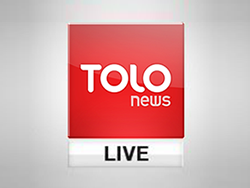
ATR-Consulting and TOLOnews surveyed the residents of Afghanistan's 34 provinces about nominees registered for the spring Presidential election. The survey, after the Independent Election Commission's (IEC) official registration process concluded, revealed that the majority of respondents who had a preference listed Dr. Abdullah Abdullah as their top choice.
More than 1,300 Afghan citizens responded to the random phone survey of the 34 provinces over the four day period of October 8 to October 12. Seventy-five percent of the participants were from urban areas and women formed 41 percent of the respondents.
All those who participated in the survey answered one simple question: "Who do you think is the best candidate, among all the candidates for the Presidency?"
Half of those interviewed claimed that there is no "best" candidate, or they did not know who it was if there was one. This half of the sample broke down as 38 percent not knowing, and 12 percent claiming there is no top candidate.
Of those who did provide a preference, 21 percent said Dr. Abdullah Abdullah is the "best" candidate. The survey results indicate that most of Abdullah's supporters are women and youth, especially those from urban areas.
Dr. Ashraf Ghani Ahmadzai came in second with support from 13.6 percent of preference respondents and Qayoom Karzai came in third with 5.7 percent.
Dr. Ghani saw most of his favor coming from men from urban areas, and a regional breakdown of the results suggests his alliance with Gen. Abdul Rashid Dostum, who is ethnically Uzbek, has served him well in the north and northeastern parts of Afghanistan. Twenty percent of Dr. Ghani's supporters were from north and north eastern provinces.
These results represent a shift from the last election in 2009 in which a survey pegged Dr. Ghani at fourth place with less than one percent of his supporters coming from northern parts of Afghanistan.
Qayoom Karzai, placed third, received most of his support from village youth, and predominantly men.
Meanwhile, Abdul Rab Rasool Sayyaf fell the forth position with 3.4 percent of respondents naming him as the "best" candidate. Sayyaf's supporters were largely from villages and he received the lowest amount of support from women amongst the top four candidates.
Gul Agha Sherzai was in fifth position, receiving 1.1 percent of respondent's preference. His supporters were mostly men.
Zalmai Rasool was next with 0.9 percent. His supporter came largely from urban areas with a large portion being women. He is the only popular nominee who has a female Vice Presidential nominee on his ticket.
Gen Abdul Rahim Wardak landed in seventh place in the survey with 0.8 percent of respondents' support. Those who preferred him were mostly men from both cities and villages.
Of Kabul respondents alone, 24 percent selected Dr. Abdullah, 16 percent Dr. Ghani, three percent Karzai, three percent Sayyaf, one percent Rasool and one percent Wardak. But 36 percent of Kabul residents who participated in the survey did not know and 16 percent said there is no good candidate.
In the central provinces, 30 percent selected Dr. Abdullah, nine percent Dr. Ghani, five percent Sayyaf, one percent Karzai, one percent Rasool, one percent Wardak and one percent Sherzai. Thirty-nine percent said they don't know and 13 percent said there is no good candidate.
In northern Afghanistan, Dr. Abdullah received 26 percent of respondents' support, Dr. Ghani 23 percent, Karzai five percent, Sayyaf two percent, Sherzai two percent and Rasool and Wardak each one percent. Eight percent said there is no good candidate and thirty-two percent said they don't know.
In western Afghanistan, Dr. Abdullah received 27 percent, Dr. Ghani eight percent, Karzai two percent, Sayyaf seven percent and then Sherzai, Wardak and Rasool with one percent each. Fourteen percent of respondents in the West said there was no good candidate and 39 percent said they don't know.
In southern Afghanistan, Dr. Abdullah received 21 percent of supporters, Dr. Ghani five percent, Karzai 15 percent, Sayyaf one percent, Sherzai six percent, Rasool two percent and Wardak two percent. Thirty-five percent said they don't know and 13 percent said there was no good candidate.
In eastern Afghanistan, Dr. Ghani saw 29 percent, Karzai 22 percent, Dr. Abdullah seven percent, Wardak and Sayyaf with two percent each and Sherzai one percent. Twenty-eight percent said they don't know and nine percent no good candidate.
Thirteen other Presidential candidates registered for the elections in April were selected by less than 0.5 percent and seven more did not have any favor amongst the respondents.
TOLOnews and ATR are likely to do more joint surveys of the Afghan electorate before the April 5 election day.
The preliminary list of eligible Presidential candidates is scheduled to be released by the IEC on October 19, and the final list on November 16.



